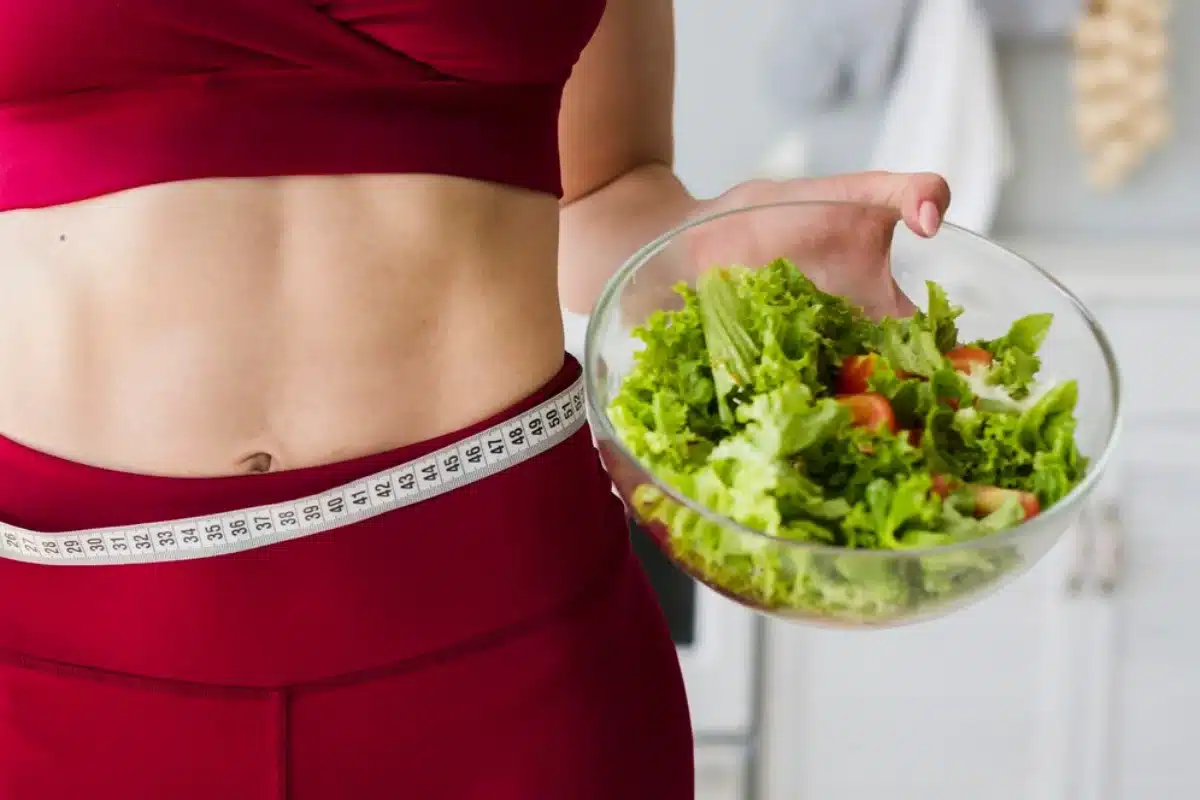
Meal Prepping for Weight Loss: A Beginner’s Guide
Weight loss isn’t only about reducing calories. It’s about making choices that help your body.” One of the best secrets of weight loss is meal prepping. It saves time and money and keeps you focused on your health goals. You have more command over your portions and thus are more likely to eat balanced meals rather than unhealthy last-minute options.
This guide will teach the fundamentals of meal prepping for weight loss. You’ll find practical tips, calorie-wise meal ideas and tips to help with healthy portion control. If you’re new to meal prepping or looking to step up your routine, this guide will walk you through crafting a meal plan that aids your weight loss journey.

Why Meal-Prepping Helps with Weight Loss
Meal prepping is more than just a trend. It’s a proven method for healthier eating. Here are some benefits for weight loss:
- Portion Control: Preparing meals in advance helps manage portion sizes and prevent overeating.
- Calorie Awareness: Planning meals ensures you meet your calorie goals for weight loss.
- Reduces Unhealthy Snacking: Having pre-portioned meals minimises the urge to grab unhealthy snacks.
- Saves Time & Money: Cooking in bulk lowers food waste and reduces the need for costly takeouts.
- Supports Nutrient Balance: A good meal plan includes proteins, healthy fats, and complex carbohydrates.

Step-by-Step Guide to Meal Prepping for Weight Loss
1. Set Your Weight Loss Goals
Start by defining your weight loss target. A safe rate is 0.5 to 1 kg per week. A calorie deficit of 500-750 calories per day should be created through diet and exercise.
Use a calorie calculator to find your daily needs based on age, gender, weight, activity level, and goals. Once you know your target, plan meals within your calorie limit.
2. Plan Your Meals in Advance
A solid meal prep for weight loss strategy starts with a clear meal plan. Keep this in mind:
- Balance Macronutrients: Include lean proteins, healthy fats, and complex carbs.
- Control Portions: Stick to recommended serving sizes to avoid overeating.
- Prepare Simple, Nutritious Meals: Focus on easy recipes that can be stored and reheated well.
- Incorporate Variety: Rotate meals to keep things interesting and help you stick to your plan.
Example Meal Plan:
- Breakfast: Greek yoghurt with berries and granola (300 kcal)
- Lunch: Grilled chicken with quinoa and roasted vegetables (450 kcal)
- Dinner: Salmon with steamed broccoli and sweet potatoes (500 kcal)
- Snacks: Hummus with carrot sticks or a boiled egg (150 kcal)
3. Create a Grocery Shopping List
Once your meal plan is set, make a grocery list to buy only what you need. Stick to whole, unprocessed foods like:
- Lean Proteins: Chicken breast, turkey, fish, tofu, eggs, legumes.
- Whole Grains: Brown rice, quinoa, whole wheat pasta, oats.
- Healthy Fats: Avocados, nuts, olive oil, seeds.
- Fruits & Vegetables: Spinach, kale, broccoli, carrots, bell peppers, berries.
- Dairy or Alternatives: Greek yoghurt, cottage cheese, almond milk.
4. Choose Your Meal Prep Method
Pick a meal prep style that fits your lifestyle:
- Batch Cooking: Cook large portions of meals and store them in the fridge or freezer.
- Individually Portioned Meals: Pre-portion meals into containers for easy grab-and-go.
- Prepped Ingredients: Chop and prepare ingredients ahead of time for quick assembly during the week.
5. Cook and Store Meals Properly
To keep meals fresh and safe, follow these guidelines:
- Refrigerate meals for up to 3-4 days.
- Freeze meals that you will eat later in the week.
- Use airtight containers to keep food fresh and prevent spoilage.
Pro Tip: Label containers with dates to track freshness and avoid waste.

Healthy Portion Control: How Much Should You Eat?
Portion control is a key challenge in weight loss. Even healthy foods can lead to weight gain if eaten too much. Here’s a simple guide:
- Protein: Palm-sized portion (about 100-150g of chicken, fish, or tofu).
- Vegetables: Half your plate should be non-starchy vegetables.
- Carbohydrates: One-quarter of your plate (about ½ cup of rice or quinoa).
- Healthy Fats: One tablespoon of olive oil or a small handful of nuts.
Visual Portion Guide:
- First = 1 cup of vegetables or grains
- Palm = 1 serving of protein
- Thumb = 1 tablespoon of fats
Calorie-Friendly Meal Ideas
Breakfast Options:
- Overnight oats with almond milk, chia seeds, and berries (350 kcal)
- Scrambled eggs with spinach and whole-wheat toast (400 kcal)
- Smoothie with banana, Greek yoghurt, and flaxseeds (300 kcal)
Lunch Options:
- Grilled chicken salad with balsamic dressing (450 kcal)
- Quinoa and chickpea bowl with roasted vegetables (400 kcal)
- Turkey and avocado wrap with mixed greens (450 kcal)
Dinner Options:
- Baked cod with brown rice and steamed asparagus (500 kcal)
- Lean beef stir-fry with broccoli and cauliflower rice (450 kcal)
- Stuffed bell peppers with ground turkey and black beans (480 kcal)
Healthy Snack Ideas:
- Apple slices with peanut butter (200 kcal)
- Cottage cheese with sliced strawberries (180 kcal)
- Hard-boiled eggs with a handful of almonds (250 kcal)
Everyday Meal Prep Mistakes to Avoid
1. Not Prepping Enough Meals
Not preparing enough meals can lead to unhealthy choices. Plan for at least 5-6 days of meals.
2. Ignoring Variety
Eating the same meals every day can cause boredom. Rotate ingredients to keep meals exciting.
3. Overcomplicating Recipes
Stick to simple, nutritious meals to make meal prepping easier.
4. Not Storing Food Correctly
Improper storage can spoil food. Always refrigerate or freeze meals properly.
Start Small to Achieve Big!
6 Tips for Meal Prep For Weight Loss. Finally, you can build a sustainable eating process through meal planning, portion control, and low-calorie food ideas.
Start small. Plan and prep a few weekly meals and scale up as you groove. Meal prepping will soon become a regular habit, contributing to a healthy lifestyle.
Are you ready to begin your meal carb-prepping journey? Share your thoughts or favourite meal prep recipes in the comments below!


